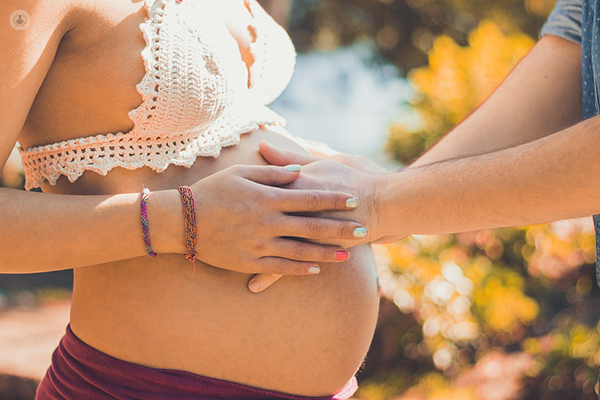Obstetric physiotherapy
What is obstetric physiotherapy?
Obstetric physiotherapy is a type of physiotherapy that focuses on gynaecological and pelvic floor issues. Obstetric physiotherapists may specialise in:
- Antenatal physiotherapeutic care for pregnant women, including antenatal classes for both the woman and her partner.
- Postnatal care to help the patient’s muscles to recover after giving birth.
- Strengthening the pelvic floor muscles.
Obstetric physiotherapy is used to prepare the pelvic floor for childbirth, decreasing the risk of perineal damage and episiotomy. It will also improve post-partum recovery and reduce muscle and bone pain.

Why is obstetric physiotherapy done?
Obstetric physiotherapy has several applications:
- Assess and treat the pain related to pregnancy and postpartum.
- Prepare and adapt the joints and muscles involved in the process of gestation and delivery.
- Postpartum recovery, to prevent pelvic floor dysfunctions.
- To prepare for or aid recovery after gynaecological surgery.
- Conservative treatment of bladder and/or bowel problems with pelvic floor exercises.
- Treatment of sexual dysfunction related to the pelvic floor muscles.
What does obstetric physiotherapy consist of?
Obstetric physiotherapy consists of a series of gentle exercises that will prepare the patient for delivery:
- Prenatal care and management – obstetric medical monitoring, follow up and physiotherapeutic support is carried out from the beginning of pregnancy until delivery.
- Preparation for childbirth – the patient is informed about the anatomy of the pelvis and the changes that occur in the body during pregnancy. This will be useful for understanding the mechanisms of childbirth, the signs of labour, the mechanisms and management of childbirth, postures and pushing, the difference between natural and induced birth, etc.
- Prenatal gymnastics – active physical exercises whose purpose is to improve the physical condition of the pregnant woman, strengthen the muscles that will participate in childbirth, conscious breathing and postures.
- Treatment of musculoskeletal pathologies – treatment of back and pelvic pain, pelvic floor problems, and diaphragm and respiratory mechanics.
- Perineal massage – specific massages to add elasticity to the perineum, which is the area located between the vagina and the anus, to facilitate delivery.
- Manual lymphatic drainage of tired legs, fluid retention (gestational lymphedema), preparation of the breast during lactation and improvement of the immune system.
- Postpartum assessment and rehabilitation – assessing the musculature of the pelvic and perineum is very important to control possible disorders and dysfunctions of the pelvis and the perineal region after delivery. This would include postpartum exercises.
Preparation for obstetric physiotherapy
For obstetric physiotherapy it does not require any special preparation. However, it is recommended not to eat for a while before the physiotherapy exercises, to avoid nausea and/or possible vomiting.